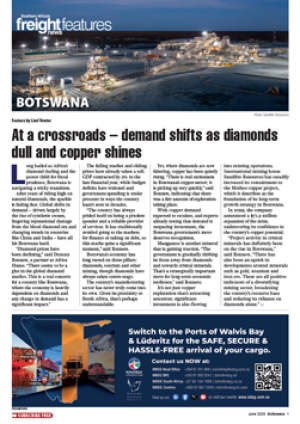Terry Hutson EVEN LOSING the equivalent of more than three days work during August due to bad weather couldn’t prevent Durban’s Container Terminal (DCT) from breaking all records by handling 91 448 containers for the month of August. The previous record was set in May this year - 91 054 containers Ð and shows what a busy year 2003 is proving for the port. At the current rate DCT should achieve close to 1.4 million TEUs during 2003. The embattled SA Port Operations also received something of a fillip with the release of the Transnet annual report, which revealed that the operator of the country’s three container terminals and other port terminals had achieved a net operating profit in excess of R300m for the year ending March. Sapo’s turnover was R2.3 billion although the net profit was dampened after an abnormal write-down provision of R419m. Its high profit-making spots are undoubtedly DCT and the Durban and East London Car Terminals, as well as the iron ore terminal at Saldanha Bay, and these must be providing just the sort of ammunition that the unions are looking for in their struggle against concessioning. During its recent National Congress, SA Transport & Allied Workers Union (Satawu) expressed the view that the removal of the container terminals from Sapo would result in what it called unmanageable pressures on the remaining terminals. This, it said, would result in a decline in service, eventual mass retrenchments and a downward pressure on general working conditions. According to information Satawu says it has, Sapo has the capacity to meet its investment requirements, which makes private sector investment unnecessary on those grounds.
